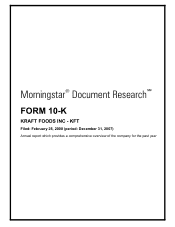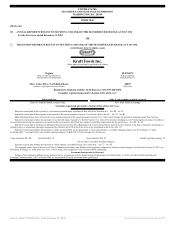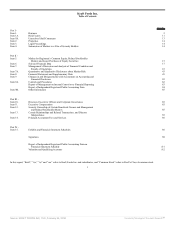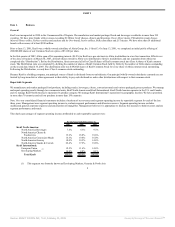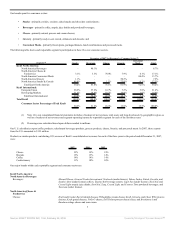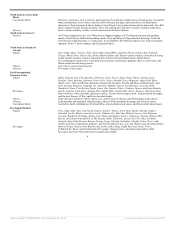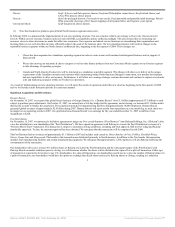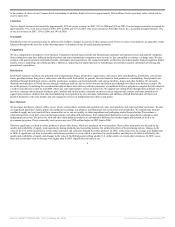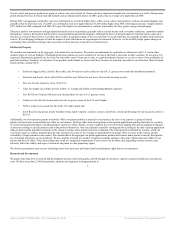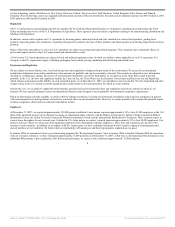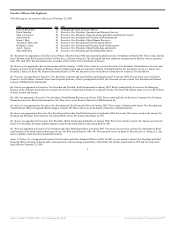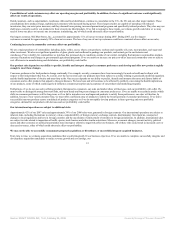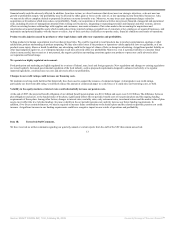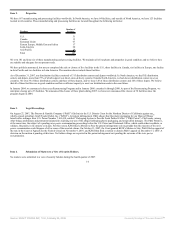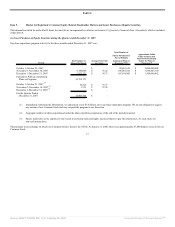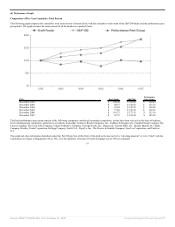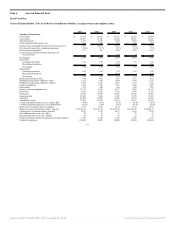Kraft 2008 Annual Report Download - page 9
Download and view the complete annual report
Please find page 9 of the 2008 Kraft annual report below. You can navigate through the pages in the report by either clicking on the pages listed below, or by using the keyword search tool below to find specific information within the annual report.
biscuit, cereal, and grocery products are grains or wheat, corn, and soybean oil. Grain costs have experienced significant cost increases as a result of burgeoning
global demand for food, livestock feed and biofuels such as ethanol and biodiesel. In 2007, grain costs on average were higher than in 2006.
During 2007, our aggregate commodity costs rose significantly as a result of higher dairy, coffee, cocoa, wheat, meat products, soybean oil and packaging costs,
partially offset by lower nut costs. For 2007, our commodity costs were approximately $1,250 million higher than 2006, following an increase of approximately
$275 million for 2006 compared with 2005. We expect the higher cost environment to continue, particularly for dairy, grains, energy and packaging.
The prices paid for raw materials and agricultural materials used in our products generally reflect external factors such as weather conditions, commodity market
fluctuations, currency fluctuations and the effects of governmental agricultural programs. Although the prices of the principal raw materials can be expected to
fluctuate as a result of these factors, we believe there will be an adequate supply of the raw materials we use and that they are generally available from numerous
sources. We use hedging techniques to limit the impact of price fluctuations in our principal raw materials. However, we do not fully hedge against changes in
commodity prices and these strategies may not protect us from increases in specific raw material costs.
Intellectual Property
We consider our trademarks, in the aggregate, to be material to our business. We protect our trademarks by registration or otherwise in the U.S. and in other
markets where we sell our products. Trademark protection continues in some countries for as long as the mark is used and, in other countries, for as long as it is
registered. Registrations generally are for fixed, but renewable, terms. From time to time, we grant third parties licenses to use one or more of our trademarks in
particular locations. Similarly, we sell some of our products under brands we license and those licenses are generally renewable at our discretion. These licensed
brands include, among others:
• Starbucks bagged coffee, Seattle’s Best coffee, and Torrefazione Italia coffee for sale in U.S. grocery stores and other distribution channels;
• Starbucks and Seattle’s Best coffee T-Discs and Tazo teas T-Discs for use in our Tassimo hot beverage system;
• Tazo teas for sale in grocery stores in the U.S.;
• Capri Sun aseptic juice drinks for sale in the U.S., Canada and within our Developing Markets segment;
• Taco Bell Home Originals Mexican style food products for sale in U.S. grocery stores;
• California Pizza Kitchen frozen pizzas for sale in grocery stores in the U.S. and Canada;
• Pebbles ready-to-eat cereals for sale in the U.S. and Canada; and
• South Beach Living pizzas, meals, breakfast wraps, lunch wrap kits, crackers, cookies, snack bars, cereals and dressings for sale in grocery stores in
the U.S.
Additionally, we own numerous patents worldwide. While our patent portfolio is material to our business, the loss of one patent or a group of related
patents would not have a material adverse effect on our business. We have either been issued patents or have patent applications pending that relate to a number
of current and potential products, including products licensed to others. Patents, issued or applied for, cover inventions ranging from basic packaging techniques
to processes relating to specific products and to the products themselves. Our issued patents extend for varying periods according to the date of patent application
filing or grant and the legal term of patents in the various countries where patent protection is obtained. The actual protection afforded by a patent, which can
vary from country to country, depends upon the type of patent, the scope of its coverage as determined by the patent office or courts in the country, and the
availability of legal remedies in the country. We consider that in the aggregate our patent applications, patents and licenses under patents owned by third parties
are of material importance to our operations. We are currently involved in a number of legal proceedings relating to the scope of protection and validity of our
patents and those of others. These proceedings may result in a significant commitment of our resources in the future and, depending on their outcome, may
adversely affect the validity and scope of certain of our patent or other proprietary rights.
We also have proprietary trade secrets, technology, know-how processes and related intellectual property rights that are not registered.
Research and Development
We pursue four objectives in research and development: product safety and quality; growth through new products; superior consumer satisfaction; and reduced
costs. We have more than 2,100 food scientists, chemists and engineers working primarily in
7
Source: KRAFT FOODS INC, 10-K, February 25, 2008 Powered by Morningstar® Document Research℠

